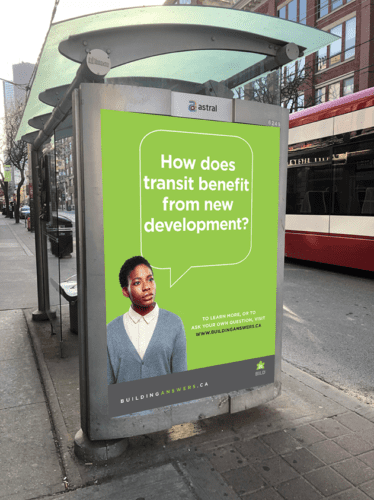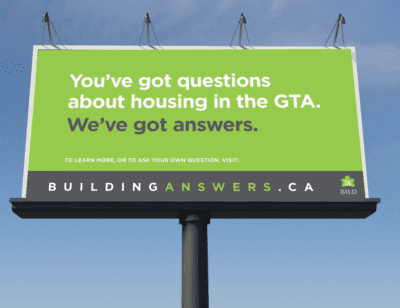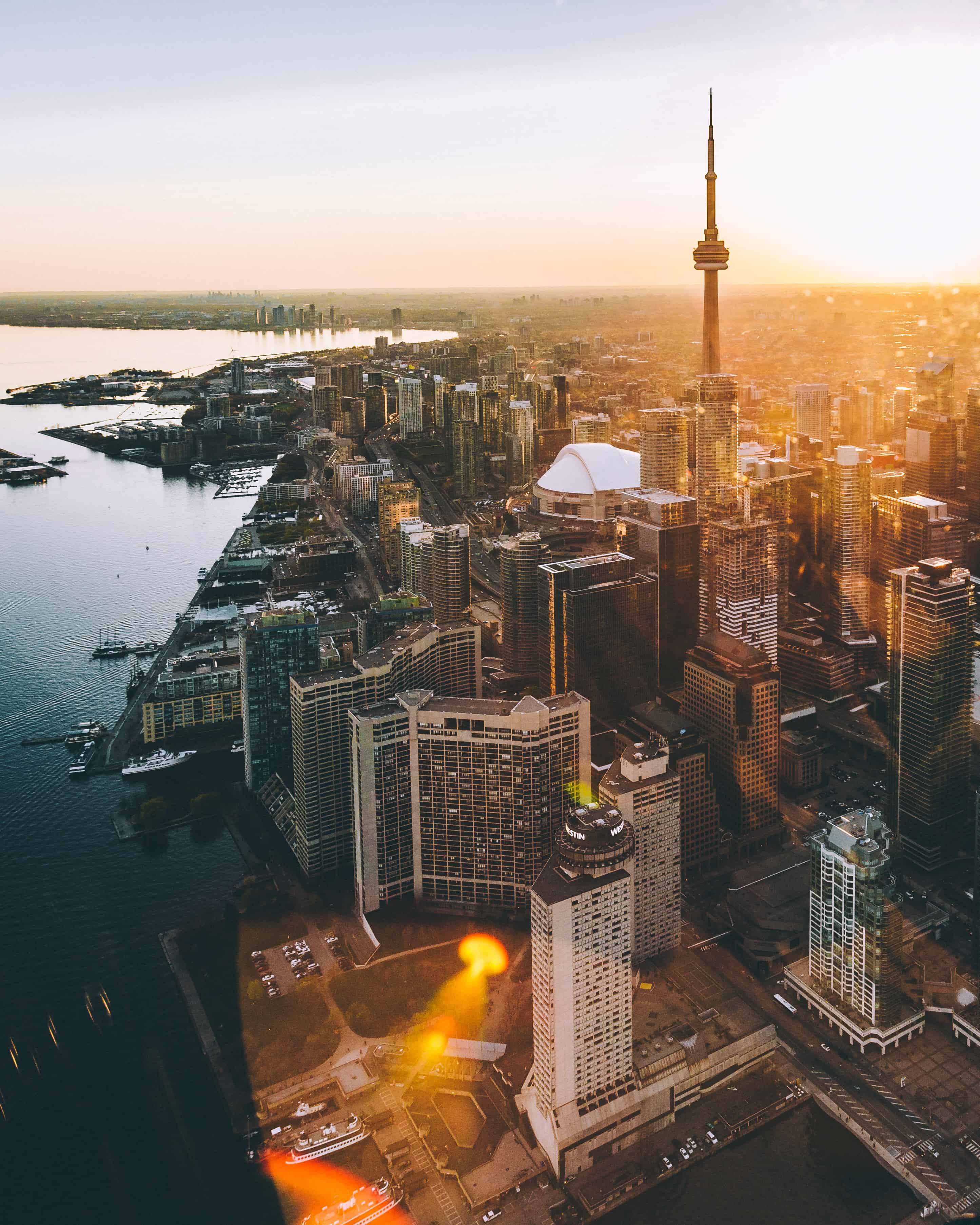Finding affordable housing in Toronto, and the GTA at large, has become a big problem. Most millennials have come to the hard conclusion that their dreams of owning a house may not be an option in the way they envisioned growing up (or at least they’re having to accept a new definition of home ownership). On social media, posts about what $1100/month can get you in Toronto’s rental market these days are widely shared. The sheer magnitude of how pricey our market has become is often met with chuckles and an eye roll, but it is no laughing matter.
While we are collectively frustrated with the lack of housing, we’re similarly dismayed by the amount of development happening all around us. (Last winter, Toronto had 104 cranes in the sky significantly beating every other North American city.) The construction, commuting around town, and inconvenience of building can elicit a lot of irritability, and here lies the disconnect: We need the housing—we’re desperate for it—but we don’t want the mess, and we fear change. This is exactly the type of uncomfortable topic about which BILD GTA hopes to spark dialogue with their newly released campaign, Building Answers. What question would you ask?

The Building Industry and Land Development Association (BILD) is a non-profit organization with a membership that includes over 1500 different companies all servicing the building industry. They are the collective voice of the home building, land development and professional renovation industry in the Greater Toronto Area. Right now, with Toronto’s population set to grow to 9.7 million by 2041, they are highlighting the barriers that hinder creating housing affordability for all. We spoke with BILD Chair Cheryl Shindruk, one of the major players in this male-dominated industry, to learn more about the story behind the Building Answers campaign, and where she sees the biggest challenges and biggest opportunities when it comes to developing a liveable city.
What sparked the Building Answers campaign?
CS: I think it’s [been] a slow build over the last several years, where we’re faced with questions all the time: Why are there so many cranes in the sky? Why can’t I find a house? Why can’t my kids find a house? Why have prices increased so much lately? These [are] questions we run into all the time, and as an industry, we feel it’s our responsibility to help answer these questions.
Noise aside, why does development stress people out? Go to NYC, or just about any major city in Europe, and the streets are way more dense, so why are we nervous about that?
Change is hard for people. We understand that. We’re trying to shine some light on why this is happening and how people can feel comfortable that change is good for our communities. We have a policy regime that is focused, to the greatest extent possible, [on] intensification, more than we’ve ever done previously. That brings the need to see our communities intensify.
Some people would argue that density is a bad thing. What do you think qualifies as a liveable city?
A liveable GTA city is a place where everyone can find housing they can afford. [It’s when] we have an ample supply of housing when we need it, and that we have a housing supply that contains a variety of types—everything from an apartment in a high-rise to an apartment in a low- or mid-rise. Ground supply—having an ample supply of housing is critical and crucial to having a thriving region. If we’re not producing enough housing for the region, in all the forms you can imagine, then we are doing a disservice to the economic and social health of the region.
Is this shortage why the real estate market is so ghastly unaffordable?
We know from the research we’ve done that we’ve fallen behind on delivering enough housing for the region; [in fact], we’ve fallen behind almost 100,000 units over the past twelve years. If you look at that data, it explains why it’s so hard to find a house and why house prices have done what they’ve done.
What areas in the GTA are you looking at specifically—areas that require growth and densification?
The demand is across the region, quite literally. Not everyone wants to live in the 905, and not everyone wants to live in the 416. People have different needs across the region. We need to be focused on delivering housing across the entire GTA.
How can regular citizens have more of a say in the development happening around them?
Every development application has a public consultation associated with it. The earlier someone gets involved in the planning process, the better. I think informing oneself around the issues is important. The Building Answers campaign is intended to help people be better informed about the benefits of growth, why change can be good for our communities, and [why] having an amount of housing that we need is important. Being informed is a really good way to participate in the process.

What’s a particular area of focus that you think needs extra attention right now?
You hear a lot of people talk about the “missing middle” and building gentle density in areas that are served by transit. That has a lot of promise that we’re beginning to tap into. It also has some of the biggest challenges, because [it’s] often happening in areas already developed … but that doesn’t mean that it is not the right thing to do.
So, to those who are totally sick of the noise, the dust, and the traffic disruptions, what do you want to say?
We’re all in this together, and only by working together will we have a region we can all be proud of and thrive in.
Got a question? Head to BuildingAnswers.ca and punch it in. Growth is inevitable and necessary, and knowledge is power. Join the conversation. This post was generously sponsored by BILD GTA, but the thoughts and opinions are my own.



 Follow Us On Instagram
Follow Us On Instagram
